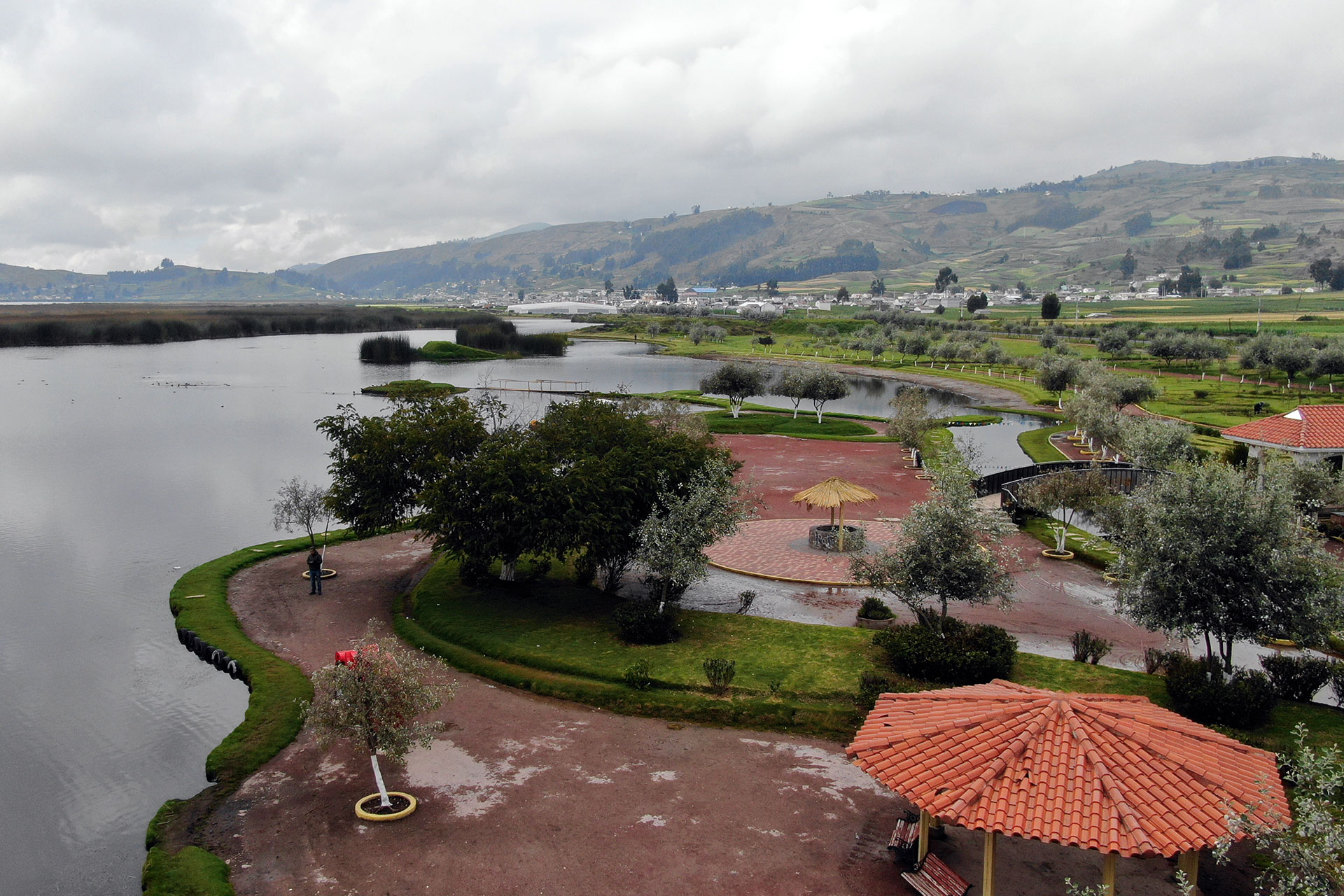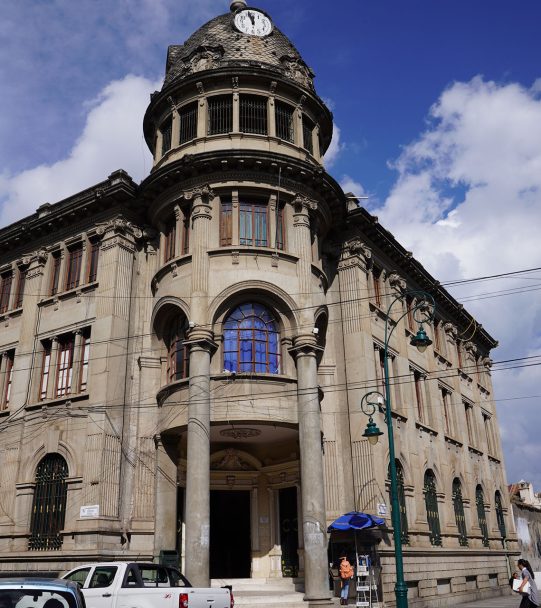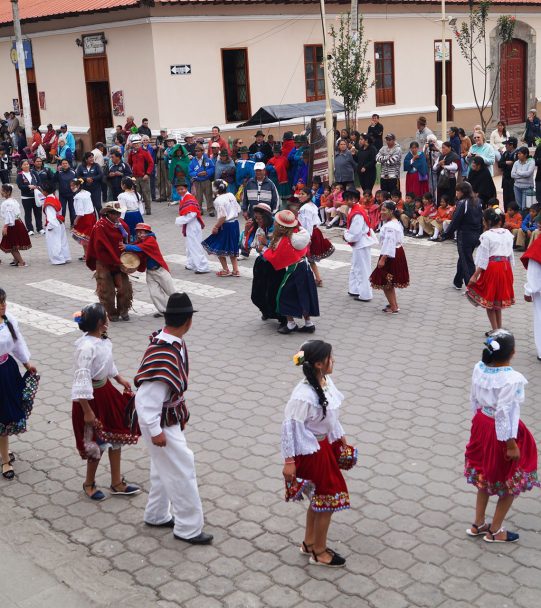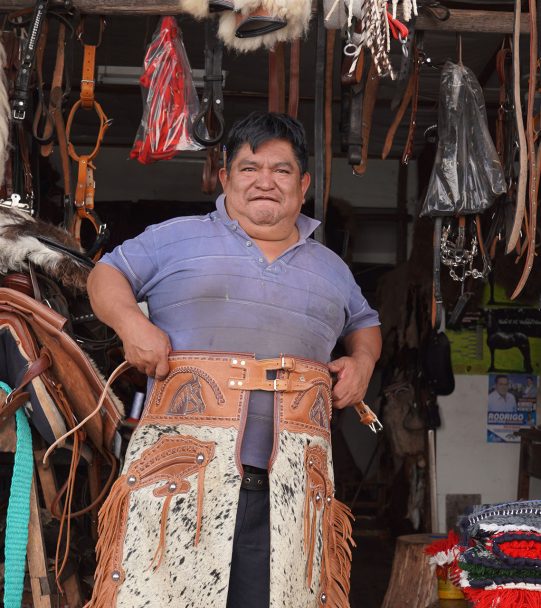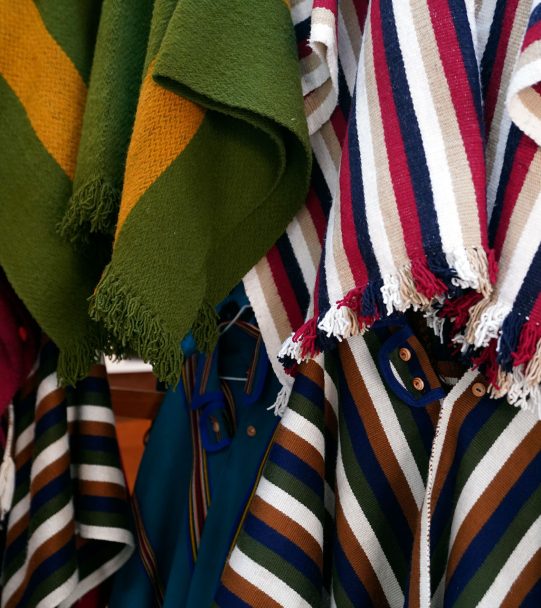Chimborazo
Chimborazo, in the heart of the Ecuadorian Sierra, stands out for its imposing geography dominated by the highest volcano in the country and for its deep cultural legacy. Its capital, Riobamba, known as the «Sultan of the Andes», offers history, culture and unique cuisine. With ancestral communities, imposing moors and colorful festivities, Chimborazo is the perfect destination to experience nature, culture and authenticity.
Connectivity
You can reach Chimborazo by road by private vehicle or bus through routes that connect Riobamba, its capital city, with main cities such as Quito y Guayaquil, The trip takes between 3 and 5 hours respectively. For those who prefer to fly, Quito airport is the closest, and from there your trip continues by land for 3 hours to Chimborazo.
Chimborazo
Subscribe to receive news about Caminos Andinos
Temperature
Ranges from 6° to 20°C
Weather
Cold temperate
More destinations
Activities and attractions
Chimborazo awaits you with a unique blend of culture, nature and Andean tradition. Discover Riobamba and its historic center, churches, museums and the emblematic Train Station. Visit Colta and the church of Balbanera, the oldest in the country, and visit Alausí, a heritage treasure. Ascend Chimborazo, the closest point to the sun, explore the Colta Lagoon and venture through Sangay National Park. Live rituals such as the Inti Raymi and celebrate festivities full of identity. Taste hornado, cuy, ceviche de chochos and discover Andean handicrafts such as chumbis and Puruhá embroidery. Participate in community tourism with the ancestral peoples and connect with the soul of the Andes.
Riobamba Historic Center
PHOTO: Ministry of Tourism of Ecuador
Colta Lagoon
PHOTO: Ministry of Tourism of Ecuador
Inti Raymi
PHOTO: Ministry of Tourism of Ecuador
Riobambeño Hornado
PHOTO: Ministry of Tourism of Ecuador
Discover what we do
-
-
CULTURE
Riobamba: Andean cities with colonial heritage
Discover in Riobamba a city full of history, architecture and cultural legacy. Walk through its Historic Center, where the Cathedral, the churches of San Antonio and La Concepción, and traditional squares such as Sucre and Maldonado await you. Admire sacred art in the Museum of La Concepción and relive the independence in the Casa de Bolívar. Visit the Museo de la Ciudad, which narrates the local history from its indigenous roots, and close the cultural visit with a walk through the emblematic Estación del Tren de los Andes.
Colta and Alausí: Heritage sites
On your visit to Chimborazo, explore the cultural legacy of Colta, home of the Balbanera Church, the oldest in the country. Ecuador, built in 1534, full of history and symbolism. In Alausí, where its historic heritage center will captivate you with cobblestone streets, republican houses with wooden balconies and an atmosphere that preserves Andean traditions. Both destinations connect you with the living history of the highland towns.
-
-
NATURE
Chimborazo Volcano: Volcanoes and snow-capped mountains
The imposing Chimborazo volcano, the closest point to the sun from the center of the Earth, awaits you with high altitude landscapes and pure air. Surrounded by Andean moorlands, it is home to vicuñas, llamas and mountain birds. In its foothills you can hike, guided ascents, mountain biking and observe the biodiversity of the Chimborazo Fauna Production Reserve. An unforgettable experience, ideal for adventurers and nature lovers. nature.
Colta Lagoon: Water that creates and connects
The Colta Lagoon invites you to enjoy a serene landscape surrounded by mountains and Andean culture. Here you can take a ride in handmade boats, watch birds such as wild ducks and take pictures with spectacular views of Chimborazo. On the shores of the lagoon is the Balbanera Church, the oldest in the country, which adds a historical touch to the environment. It is a perfect place to connect with nature and local history.
Sangay National Park: Exploration and birdwatching trails
Sangay National Park awaits you with breathtaking landscapes ranging from eternal snows to subtropical jungles. Venture on advanced trekking routes to El Altar volcano, explore lagoons such as Atillo and Ozogoche, and observe species such as the spectacled bear and the Andean tapir. Ideal for photography, camping, biking and bird watching, this park connects you with the wildest and most authentic nature in Ecuador.
-
-
ANCESTRAL COMMUNITIES AND RURALITY
Discover the living heritage of the Puruhá people in the province of Chimborazo, an ancient culture that flourished before the Inca conquest and today proudly maintains its traditions. ancestral. Through initiatives such as Puruhá Razurku and Chankana, you can live authentic experiences of community tourism: hiking through Andean landscapes, bird watching, craft workshops, cultural encounters and taste the local cuisine. A unique opportunity to connect with the Andean identity from its roots.
Holidays:
Chimborazo celebrates with joy and tradition festivities full of identity. In December and January, live the Feast of the Magi, with parades and characters that represent the adoration of the Child Jesus. The Passing of the Child, declared Intangible Cultural Heritage of Ecuador, travels the streets with colorful costumes, music and faith. In February, the Carnival fuses indigenous and religious customs with water games, flowers, dances and Andean melodies that enchant visitors.
Fairs and festivals of ancestral origin:
Chimborazo invites you to experience its ancestral festivities, full of spirituality, color and tradition. In June, participate in the Inti Raymi, where communities pay homage to the sun and celebrate the new agricultural cycle with dances, offerings and Andean rituals. In February or March, enjoy the Pawkar Raymi, the blossoming festival, with music, chicha and traditional dress. In September, the Killa Raymi honors the moon, women and fertility with ceremonies and lively cultural expressions.
-
-
GASTRONOMY
Traditional Andean cuisine
Chimborazo invites you to savor its most traditional cuisine with unique dishes full of history. Try the famous hornado de Riobamba, pork baked slowly until crispy, served with mote, potato and pickled tomato and onion. Enjoy ceviche de chochos, a fresh mixture of chochos, tomato, onion and lemon, typical in local markets. And don't miss the roasted guinea pig with potatoes, prepared on the grill with Andean spices, a dish that is a must. ancestral that connects the visitor with the culture of the Andes.
-
-
CRAFTS
Discover ponchos and tapestries made with sheep and alpaca wool, or articles of leather, stone, cabuya and totora in the traditional Guano. The Kichwa Puruhá people have given life to a fashion identity with colorful embroidery, chumbis, white shirts, coral necklaces and the black anaco are worn with pride in the Plaza. Artisanal del Tren, Sumak Churay, Vispu and other spaces that celebrate Andean art.
Chumbi or Andean sash: Andean textiles
The chumbi or Andean sash is a textile piece full of identity. Hand-woven by Kichwa artisans, it combines intense colors and symbolic designs that represent the connection with the earth and ancestral history. More than an accessory, it is a living expression of the Puruhá culture that you can admire and carry with you as an authentic souvenir.
CULTURE
Riobamba: Andean cities with colonial heritage
Discover in Riobamba a city full of history, architecture and cultural legacy. Walk through its Historic Center, where the Cathedral, the churches of San Antonio and La Concepción, and traditional squares such as Sucre and Maldonado await you. Admire sacred art in the Museum of La Concepción and relive the independence in the Casa de Bolívar. Visit the Museo de la Ciudad, which narrates the local history from its indigenous roots, and close the cultural visit with a walk through the emblematic Estación del Tren de los Andes.
Colta and Alausí: Heritage sites
On your visit to Chimborazo, explore the cultural legacy of Colta, home of the Balbanera Church, the oldest in the country. Ecuador, built in 1534, full of history and symbolism. In Alausí, where its historic heritage center will captivate you with cobblestone streets, republican houses with wooden balconies and an atmosphere that preserves Andean traditions. Both destinations connect you with the living history of the highland towns.
NATURE
Chimborazo Volcano: Volcanoes and snow-capped mountains
The imposing Chimborazo volcano, the closest point to the sun from the center of the Earth, awaits you with high altitude landscapes and pure air. Surrounded by Andean moorlands, it is home to vicuñas, llamas and mountain birds. In its foothills you can hike, guided ascents, mountain biking and observe the biodiversity of the Chimborazo Fauna Production Reserve. An unforgettable experience, ideal for adventurers and nature lovers. nature.
Colta Lagoon: Water that creates and connects
The Colta Lagoon invites you to enjoy a serene landscape surrounded by mountains and Andean culture. Here you can take a ride in handmade boats, watch birds such as wild ducks and take pictures with spectacular views of Chimborazo. On the shores of the lagoon is the Balbanera Church, the oldest in the country, which adds a historical touch to the environment. It is a perfect place to connect with nature and local history.
Sangay National Park: Exploration and birdwatching trails
Sangay National Park awaits you with breathtaking landscapes ranging from eternal snows to subtropical jungles. Venture on advanced trekking routes to El Altar volcano, explore lagoons such as Atillo and Ozogoche, and observe species such as the spectacled bear and the Andean tapir. Ideal for photography, camping, biking and bird watching, this park connects you with the wildest and most authentic nature in Ecuador.
ANCESTRAL COMMUNITIES AND RURALITY
Discover the living heritage of the Puruhá people in the province of Chimborazo, an ancient culture that flourished before the Inca conquest and today proudly maintains its traditions. ancestral. Through initiatives such as Puruhá Razurku and Chankana, you can live authentic experiences of community tourism: hiking through Andean landscapes, bird watching, craft workshops, cultural encounters and taste the local cuisine. A unique opportunity to connect with the Andean identity from its roots.
Holidays:
Chimborazo celebrates with joy and tradition festivities full of identity. In December and January, live the Feast of the Magi, with parades and characters that represent the adoration of the Child Jesus. The Passing of the Child, declared Intangible Cultural Heritage of Ecuador, travels the streets with colorful costumes, music and faith. In February, the Carnival fuses indigenous and religious customs with water games, flowers, dances and Andean melodies that enchant visitors.
Fairs and festivals of ancestral origin:
Chimborazo invites you to experience its ancestral festivities, full of spirituality, color and tradition. In June, participate in the Inti Raymi, where communities pay homage to the sun and celebrate the new agricultural cycle with dances, offerings and Andean rituals. In February or March, enjoy the Pawkar Raymi, the blossoming festival, with music, chicha and traditional dress. In September, the Killa Raymi honors the moon, women and fertility with ceremonies and lively cultural expressions.
GASTRONOMY
Traditional Andean cuisine
Chimborazo invites you to savor its most traditional cuisine with unique dishes full of history. Try the famous hornado de Riobamba, pork baked slowly until crispy, served with mote, potato and pickled tomato and onion. Enjoy ceviche de chochos, a fresh mixture of chochos, tomato, onion and lemon, typical in local markets. And don't miss the roasted guinea pig with potatoes, prepared on the grill with Andean spices, a dish that is a must. ancestral that connects the visitor with the culture of the Andes.
CRAFTS
Discover ponchos and tapestries made with sheep and alpaca wool, or articles of leather, stone, cabuya and totora in the traditional Guano. The Kichwa Puruhá people have given life to a fashion identity with colorful embroidery, chumbis, white shirts, coral necklaces and the black anaco are worn with pride in the Plaza. Artisanal del Tren, Sumak Churay, Vispu and other spaces that celebrate Andean art.
Chumbi or Andean sash: Andean textiles
The chumbi or Andean sash is a textile piece full of identity. Hand-woven by Kichwa artisans, it combines intense colors and symbolic designs that represent the connection with the earth and ancestral history. More than an accessory, it is a living expression of the Puruhá culture that you can admire and carry with you as an authentic souvenir.
 Skip to content
Skip to content


